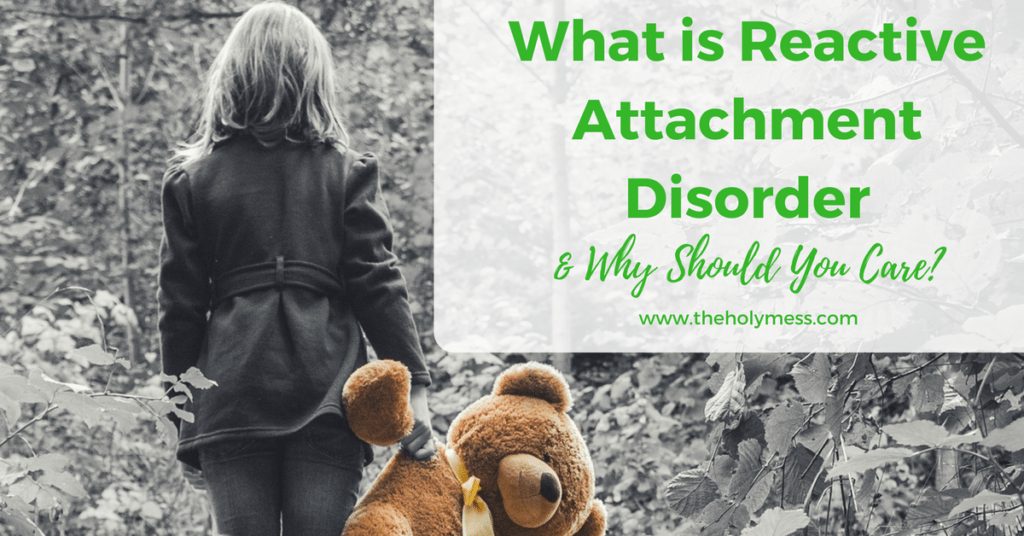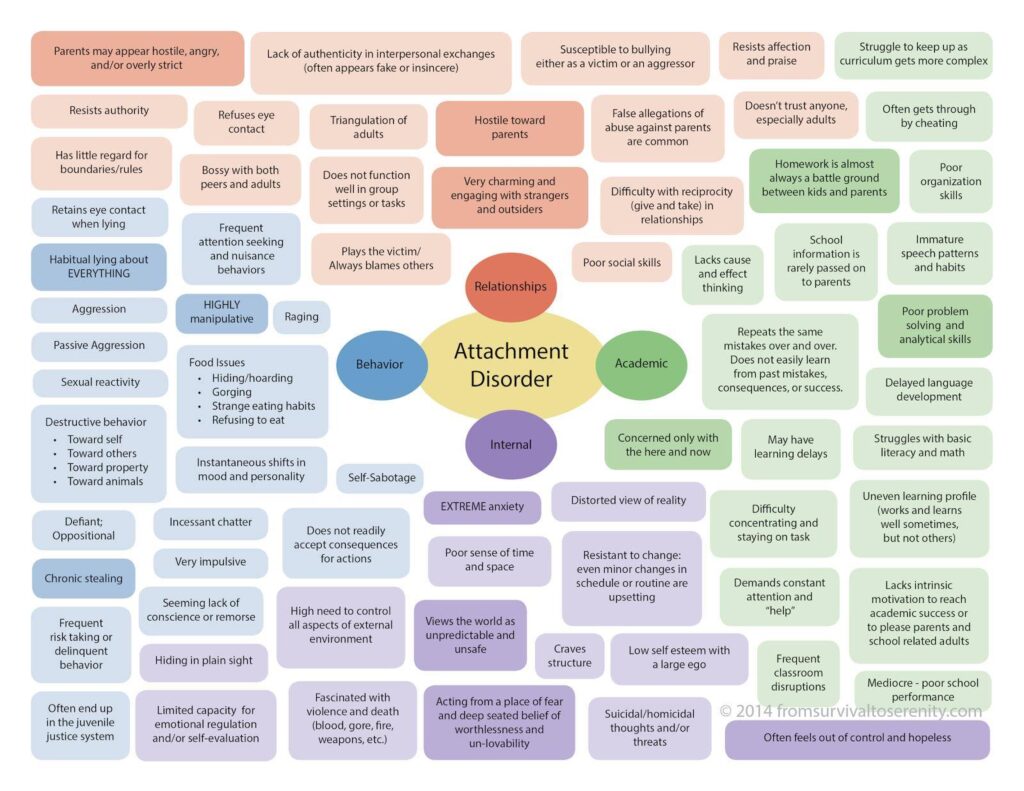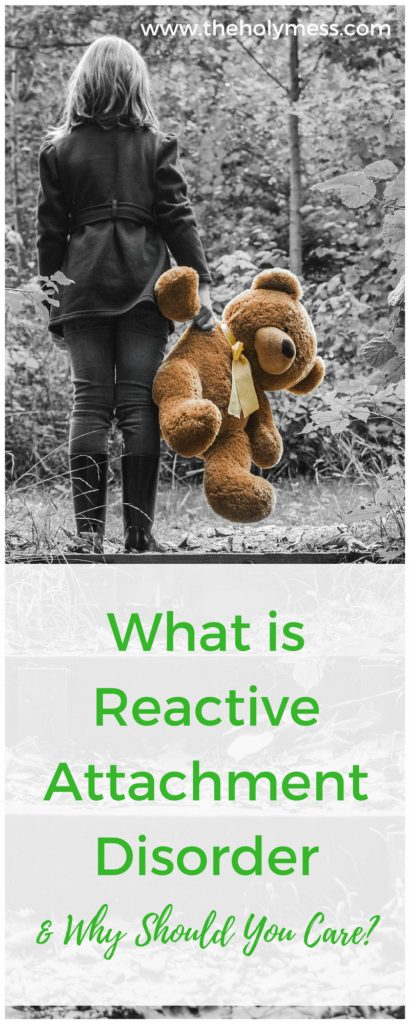From the moment a baby is born, and even before birth during the 9 months his mother is carrying him, a baby is designed to develop attachment with a nurturing caregiver. When a baby’s needs are provided for and mom or dad looks loving into his eyes, talks to him, and shows loving care, a baby learns to trust. When this amazing process does not happen due to neglect, a mother’s depression, or early childhood trauma or abuse, a child is at risk for developing attachment issues or Reactive Attachment Disorder (RAD). What is RAD and why should you care?
Get the information from this article in a free PDF report. Where should we send your free report?
What is Reactive Attachment Disorder (RAD)?
Reactive Attachment Disorder (RAD) is defined as a problematic pattern of developmentally inappropriate moods, social behaviors, and relationships due to a failure in forming normal healthy attachments with primary care givers in early childhood.
A child who experiences neglect, abuse, or separation during the critical stages of development during first three years of life is at risk of developing an attachment disorder.
Remember, only a qualified doctor or trained therapist can diagnose an attachment disorder.
Are you gift shopping for a child who has attachment issues? Be sure to check out our post, 15 Gifts that Promote Attachment and Bonding to find an idea present, while also promoting healthy relationships.
Causes of Reactive Attachment Disorder (RAD)
While study is ongoing, the following are reasons why a child might have an attachment disorder:
- Early childhood trauma or abuse
- No primary caregiver or a depressed primary caregiver
- Medical procedures during the first years of life
- Neglect during the first years of life
RAD is typically seen in children who have been abused, neglected, or experienced trauma from newborn to 3 years of age. Reactive Attachment Disorder is often seen in children who have been in foster care or adopted from other countries, but that is not always the case. RAD is also seen in biological children or within step-families.
Types of Attachment Disorder
There are now two sub-types of attachment disorders – emotionally withdrawn/inhibited and indiscriminately disinhibited, defined separately in the DSM-V as distinct disorders:
- Reactive Attachment Disorder (RAD)
- Disinhibited Social Engagement Disorder (DSED).
Reaction Attachment Disorder is diagnosed when a child’s relationships are inhibited and the child fails to engage in social interactions in way that is appropriate developmentally. Disinhibited Social Engagement Disorder (DSED) is diagnosed when a child does not have an appropriate attachment to primary caregivers but instead will attempt to form relationships with strangers.
Signs of Attachment Disorder in Infants
- Avoids eye contact
- Doesn’t smile
- Doesn’t reach out to be picked up
- Rejects your efforts to calm, soothe, and connect
- Doesn’t seem to notice or care when you leave them alone
- Cries inconsolably
- Doesn’t coo or make sounds
- Doesn’t follow you with his or her eyes
- Isn’t interested in playing interactive games or playing with toys
- Spend a lot of time rocking or comforting themselves
Symptoms of Reaction Attachment Disorder (RAD)

photo credit: fromsurvivaltoserenity.com. Note: children do not need to exhibit all the signs in order to receive a diagnosis of RAD.
RAD is diagnosed when a child’s social relations are inhibited and, as a result, he/she fails to engage in social interactions in a manner appropriate to his/her developmental age.
The child may show:
- avoidance
- hyper-vigilance or
- resistance to social contact
- avoid social reciprocity
- fail to seek comfort when upset
- become overly attached to one adult
- refuse to acknowledge a caregiver
Symptoms of Disinhibited Social Engagement Disorder (DSED)
DSED is diagnosed when a child is:
- excessively social with strangers
- does not engage in selective attachments
- indiscriminately engage in social behavior
RAD (Reactive Attachment Disorder) was originally the only diagnostic measure for children with unhealthy attachment. In recently years, as more about attachment has come to light, the subsets of RAD and DSED have been added.
I believe that in future years different and more specific terms will be used, but as of today these remain the standard criteria for this complex disorder.
In the next post in this series, I’ll share more information about types of unhealthy attachment issues, what it means in day to day life, and getting treatment.
Why Should You Care About Reactive Attachment Disorder (RAD) and How Can You Help?
The diagnostic descriptions of Reactive Attachment Disorder to do not begin to explain what everyday life is like for the families and children who live with these realities. Families who are raising children with RAD, DSED, or attachment issues need your support.
As with many mental health disorders, often these diagnosis are not isolated. Many children with RAD also deal with PTSD, Oppositional Defiant Disorder, ADHD, depression, and other mental health challenges.
Understanding is critical. Many of the parenting strategies that generally work for typical child are not effective for a child who has Reactive Attachment Disorder.
Parents and siblings often deal with Secondary PTSD.
At the extreme end of the attachment disorder continuum, children have the capacity to develop without a conscious, which leads to psychopathic tendencies if treatment is not effective. Parents who are raising children with RAD, caregivers, teachers, and therapists deserve our support and funding. They are working to heal the hearts of these children so they can be safe, productive members of society.
As one of my friends says about her son who is healing from RAD, “We are teaching him how to love.”
More Posts You Will Love
How to Find Residential Treatment for Children
This Morning Was Ugly: Parenting Children with Emotional Issues
What Life is Like When Your Child Has Mental Health Issues
Attachment Therapy: When a New Start is Scary
Are you parenting a child with RAD (Reactive Attachment Disorder)? Please share your insights in the comments below. What do you wish people knew?

Attachment Disorder

Get a free 15 page report about attachment issues in children.
+Signs of attachment disorder and what you need to watch for in your children
+4 types of attachment disorder - does your child fit one of these?
+Where to turn when family life isn't working








All my husband, children and I ever wanted was support from our family and friends. Unfortunately people are not educated on this and seem closed minded to learning the truth of how heinous the situationcan be. It is so devastating for the families that are victims of RADs behavior. A vicious cycle.
I’m sorry you are going through this, Brandy. I know it’s incredibly difficult. I am praying that your family and friends will grow in understanding for all you are going through and become more supportive. If you haven’t yet, be sure to sign up for this email sequence. Many people have told me it’s been incredibly helpful to them: https://theholymess.com/10-traits-you-must-have-to-parent-kids-from-hard-places/
Sara, I am a real life walking RAD child at age 57. I grew up mostly in foster care. All my adult life I have had a feeling that something was wrong. Probably 80% of your chart I could put my name on. Praying, reading God’s Word and asking for forgiveness every day, multiple times, just didn’t seem to help at times. I couldn’t figure how come I turn people off. Satan wrecks havoc on my thought processes. Until this article, I am a frustrated Christian. I can work with this. One thing the article doesn’t address is RAD in adults and what one can do to move on and live, thrive and grow inspire of RAD.
Thank you,
Karla
Karla, Thanks SO much for sharing an awesome perspective of someone who has walked this journey. That is really helpful to those of us who are currently parenting children who struggle with attachment disorder and RAD. God bless you for how you are staying with your faith. God will not leave you or forsake you! I know there are resources for adults with RAD — too much for me to address in one blog post but it’s a great topic for future ones. I’ll be writing more about attachment later this month. Please keep reading and commenting.